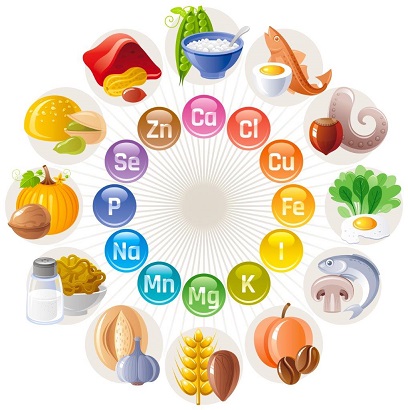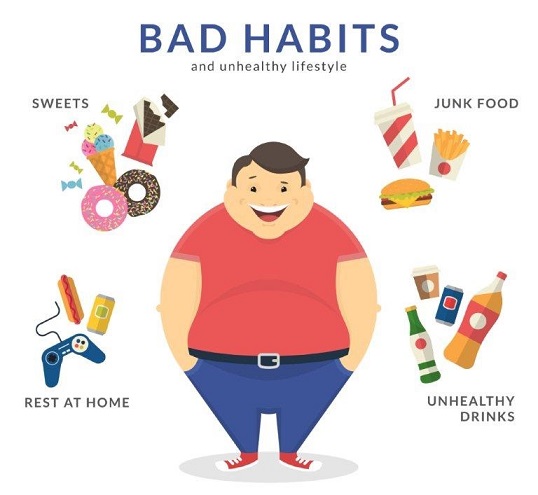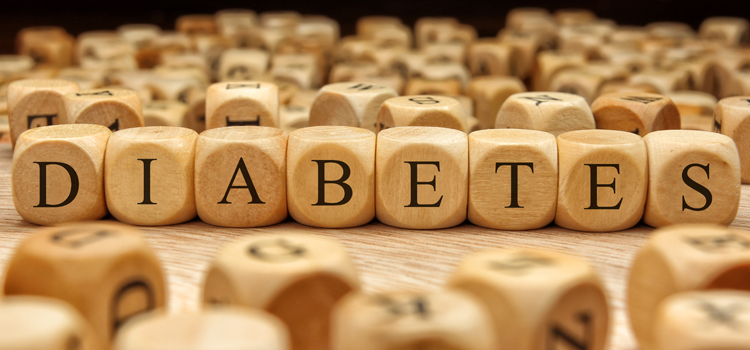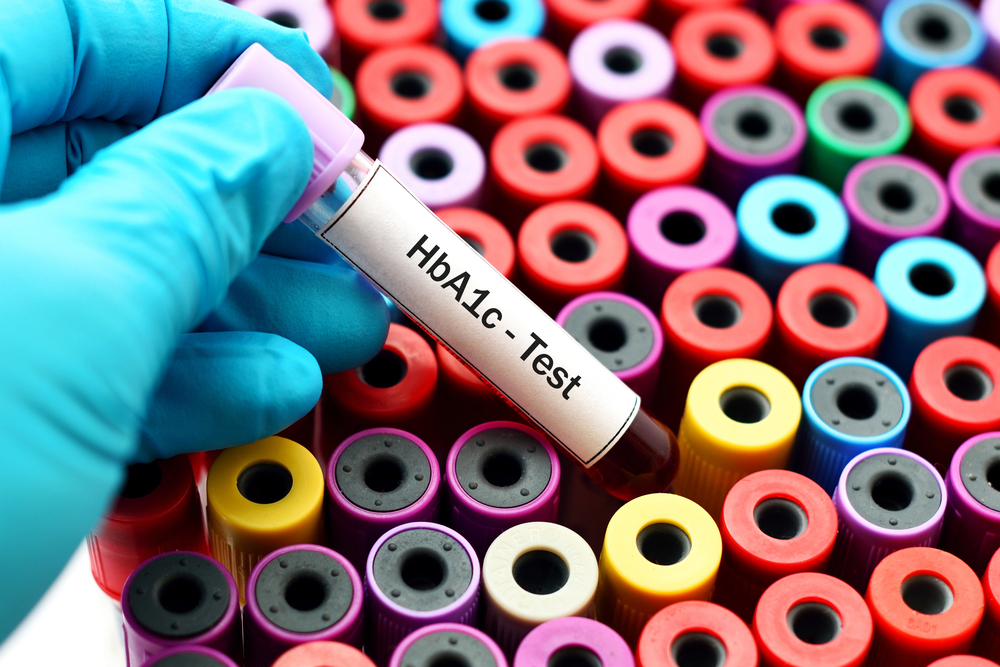Importance of HbA1c Blood Test
Overview
Diabetes mellitus, commonly known as diabetes is a chronic disease that occurs when blood glucose, also called blood sugar, is higher than usual. Blood glucose is the main source of energy for the body and comes from the food we eat.
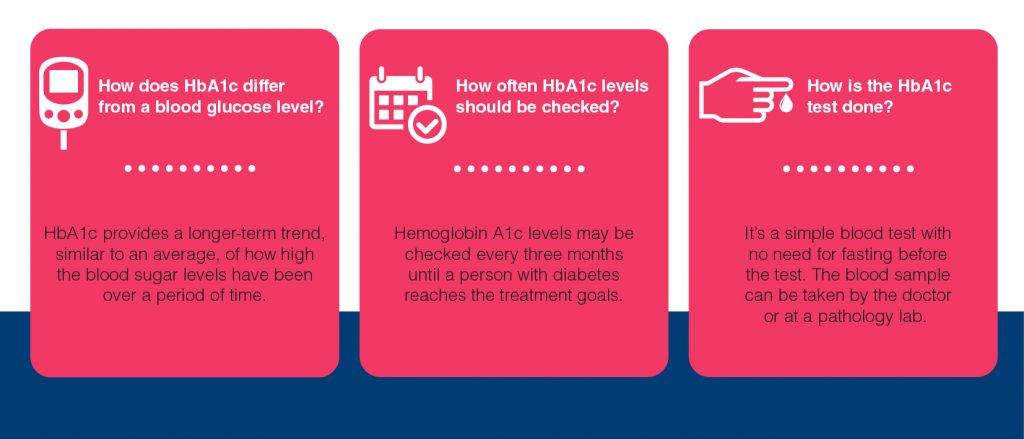
Over the long-term high glucose levels are associated with damage to the body and failure of various organs and tissues.
What is the need for the HbA1c test?
HbA1c test may be needed if a person has the symptoms of diabetes including:
- Frequent urination
- Excessive thirst
- Weight loss
- Increased Hunger
- Extreme fatigue
- Blurry vision
- Slow-healing wounds
- Tingling or numbness in the feet or toes
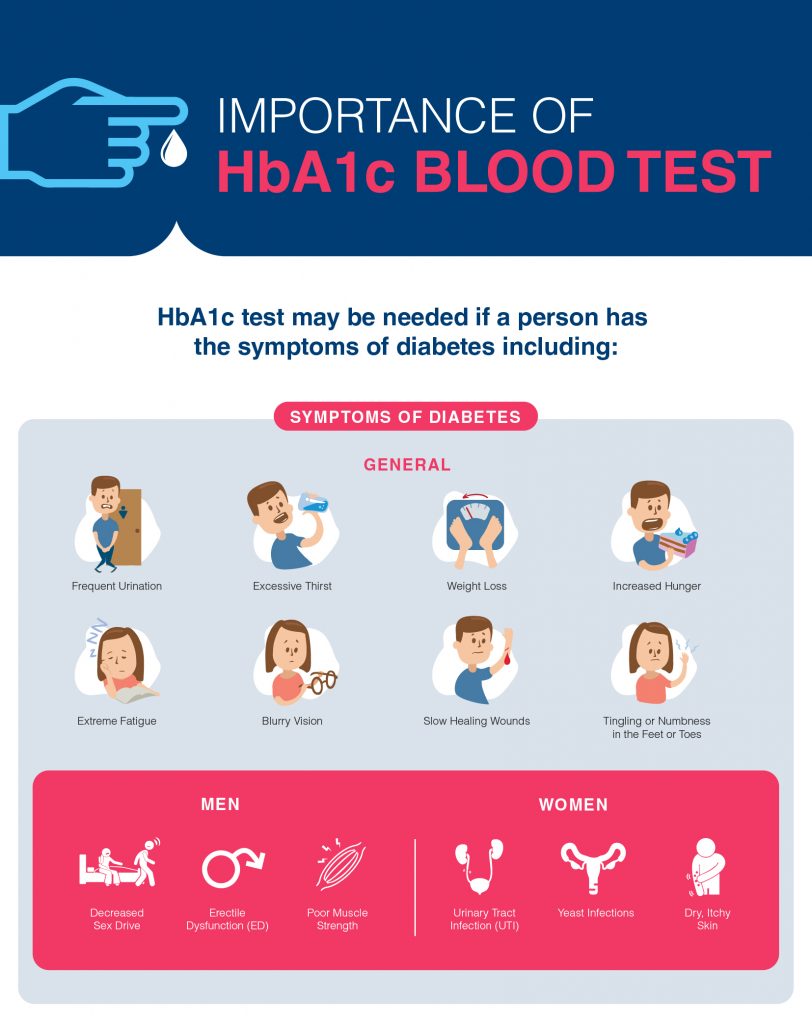
Men with diabetes may have
- Decreased sex drive
- Erectile dysfunction (ED)
- Poor muscle strength.
Women with diabetes may have
- Urinary Tract Infection (UTI)
- Yeast Infections
- Dry, Itchy skin
Why is the Hemoglobin A1c (HbA1c) test important?
The HbA1c test is a useful, simple and inexpensive blood test that can be used to diagnose diabetes and also to monitor blood glucose control in people with known diabetes.
This test evaluates the average amount of glucose in the blood over the last 2 to 3 months. It’s also called HbA1c, hemoglobin A1C, glycated hemoglobin, and glycosylated hemoglobin.
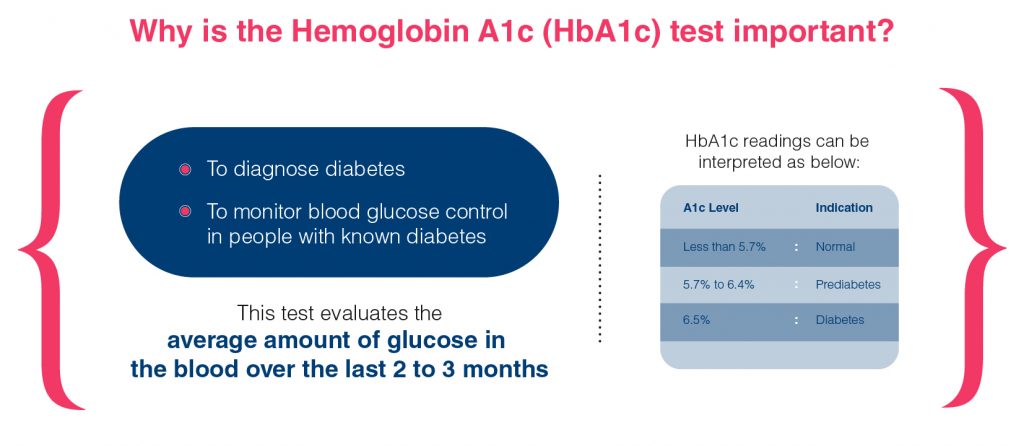
HbA1c readings are reported as a percentage and can be interpreted as below:
|
A1c Level |
Indication |
| Less than 5.7% | Normal |
| 5.7% to 6.4% | Prediabetes |
| 6.5% |
Diabetes |
What is Hemoglobin?
Hemoglobin is a protein found in red blood cells and provides blood its red color. Hemoglobin carries oxygen throughout the body.
How does the HbA1c test work?
The sugar in the blood is called glucose. When glucose builds up in the blood, it binds to the hemoglobin present in red blood cells forming glycated hemoglobin. The amount of glucose that combines with hemoglobin is directly proportional to the total amount of sugar that is in the system at that time.
As red blood cells in the human body survive for 8-12 weeks before renewal, measuring glycated hemoglobin (or HbA1c) can be used to reflect average blood glucose levels over that duration, providing a useful longer-term gauge of blood glucose control.
The higher the level of glucose in the blood, the higher the level of hemoglobin A1c is detectable on red blood cells.
What are the benefits of lowering HbA1c?
Improving HbA1c for people suffering from Diabetes cuts the risk of complications such as:

- Retinopathy
- Neuropathy
- Diabetic Nephropathy
- Cataracts
- Heart Failure
- Peripheral vascular disease
How does HbA1c differ from a blood glucose level?
HbA1c provides a longer-term trend, similar to an average, of how high the blood sugar levels have been over a period of time whereas Blood glucose level is the concentration of glucose in the blood at a single point in time.
How often HbA1c levels should be checked?
Hemoglobin A1c levels may be checked every three months until a person with diabetes reaches the treatment goals.
People with diabetes who are meeting treatment goals and have stable blood control are recommended to check their hemoglobin A1c every six months.
How is the HbA1c test done?
The HbA1c test is a simple blood test with no need for fasting before the test. The blood sample can be taken by the doctor or at a pathology lab.
What are the tips to lower HbA1c levels?
Here are some tips to help lower HbA1c levels:

- Lose extra weight. Excess weight is the single most important cause of type 2 diabetes.
- Eat a balanced, healthy diet
- Get more physical activity. Exercise can help to lose weight, lower blood sugar and boost sensitivity to insulin
- Limit alcohol intake
- Quit smoking





